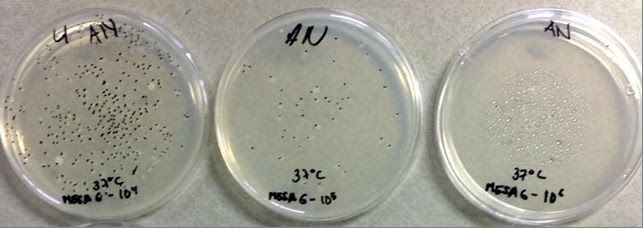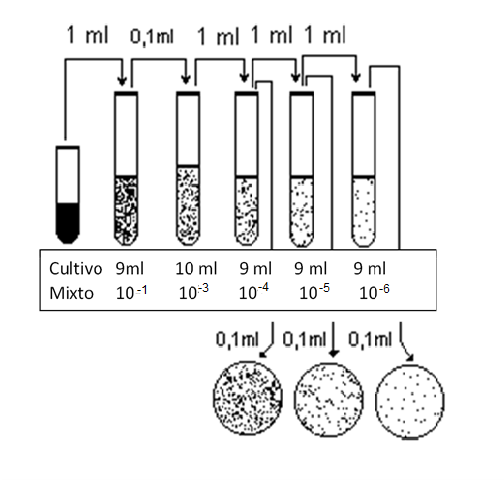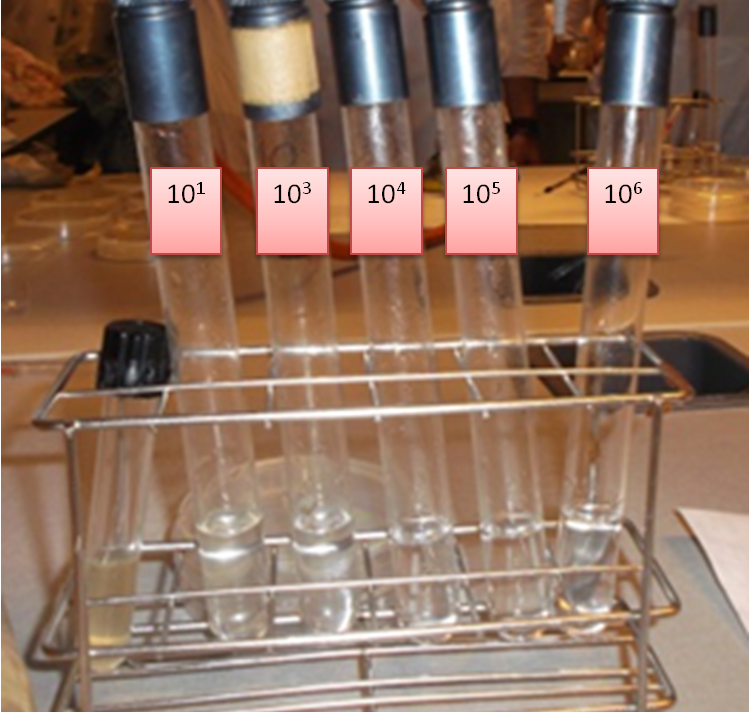Serial dilution
Isolation and count technique: Serial dilution
This technique has a double objective, to isolate colonies and also to count the microorganisms that exist in the initial culture.
Five test tubes containing sterile saline solution are used, one of them contains 10 ml and the others contain 9 ml, in the order shown in the figure. Using a sterile pipette take 1 ml of the mixed culture and put it in the first test tube. Shake until a homogenous suspension is obtained. Take another sterile pipette and from the first test tube transfer 0.1 ml into the second test tube, shake it and repeat the operation by transferring 1ml of the second test tube into the third, from the third to the fourth and from the fourth to the fifth.
Having completed the serial dilution the nutrient agar plates are then inoculated using the content of the three last test tubes (dilutions 104, 105 y 106) 0.1 ml, using the spread plate technique (see video). The 100 microliters is applied on the surface of the agar and the sample must be spread all over the surface of it, using a glass loop.
To sterilize the glass loop, first put it in alcohol and flame it using a Bunsen burner. Let the flame burn up the alcohol and then open the lid of the plate just enough to be able to put the loop in and spread the sample by streaking it with the base of the triangle over the entire surface of the culture medium until it absorbs all the water. Incubate at 37ºC for 24 hours and count the colonies by calculating the concentration of the cells in the initial test tube using the formula:
ufc / ml = N x D x 10
Where:
- cfu= colony forming units
- D = dilution
- N = No. of colonies
Example of the results after making the serial dilution.

Count of the number of colonies on the plates inoculated with the dilutions 104, 105 and 106, (a glass marker is used to mark each colony one by one to make the count easier).
Educational Innovation Activities Assistance- Vice Rector for Academic Affairs/ Enquiries and technical matters – Tel: 96 522 2059 –

